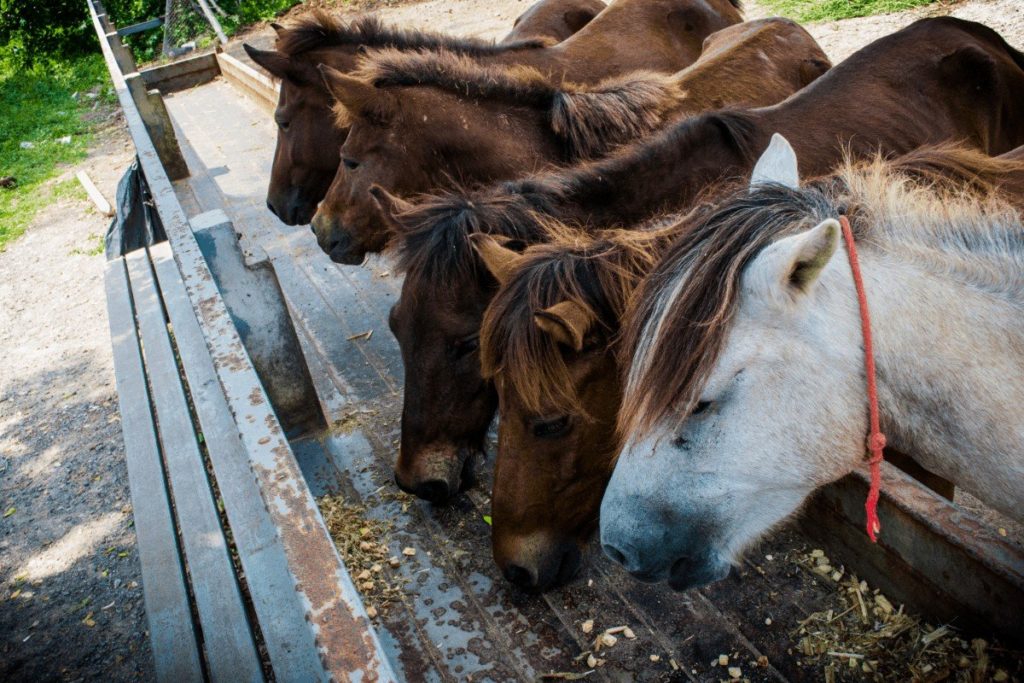Whilst we all know that obesity is a common human problem, have you ever thought about the impact of excessive weight gain on animals? Effecting animals in the same way it does humans, obesity not only changes the appearance of the animal but also brings with it many health problems, some more gradual than others. If you are a pet owner, understanding the importance of this issue for your dog, cat, horse, or other animals, and how to feed them nutritionally and not excessively, is essential.
Quality over Quantity
Finding the root cause of any animals’ weight problem usually comes down to the amount of food they are consuming and the amount of exercise. With humans needing a good balance of both, so do animals. This is why it is important to ensure your pet’s food is nutritious and low in sugar, something specialist cat, dog and horse feeds provide with the right balance of vitamins and minerals for overall good health. To assess whether an animal is overweight, a body condition score (BCS) system can be used; vets and nutritionists can help with this if you’re not confident to assess your own pet. This score gives an indication, much like a Body Mass Index (BMI) reading for humans, of whether the animal is underweight, ideal, or overweight.
Systems specific to different species are used and for horses the Henneke system has been used since the 1980s. The horse is ranked from 1 to 9 according to the amount of fat they are storing in different areas of their body. A score between 7 and 9 being overweight and ideal being 4 to 6. In the 1990s, the Kohnke scale simplified this to score between 1 to 5, with anything over 3 considered to be overweight. Numbers of horses that are considered to be overweight or obese have been as high as 70% in some horse populations in the UK which is similar to levels seen in humans The NHS reports that 67% of men and 60% of women are overweight or obese.
The result of obesity in horses is Equine Metabolic Syndrome (EMS) – loosely similar to diabetes in humans, where the animal is unable to regulate blood insulin levels, and there is abnormal regional fat deposition and difficulty losing weight. This can be seen in ponies, donkeys and horses and can lead to health conditions such as infertility, laminitis, and generally poor performance in their work. So, why is it so high within horses in particular?
Overfeeding and Re-Education
The most susceptible to become obese among horses include cobs, ponies, and draught horses. Native breeds tend to be more metabolically efficient The domesticated environment for a horse is like a luxury hotel and so they use much less energy keeping warm and have access to much better nutrition than they would in their natural environment – paddocks are well maintained compared to moorland and heaths where native ponies evolved!
Horse-owners are often using horse food as a reward for their horse and as a nation of “feeders” we gain a lot of satisfaction from providing our pets with a meal just as we would our families so over-feeding can be a problem.
It may sometimes be difficult to visually tell that your pet is overweight, but if your vet or nutritionist has determined this then weight management is needed. A weight loss weight loss program needs to be tailored to your animal and then re-assessed every 4 to 6 weeks ideally. If it is necessary to restrict the amount of pasture a horse is consuming then it is important to provide a a low-calorie feed with protein, vitamin and mineral to ensure nothing important is missing from their diet.
Exercise is also important and if possible, a horse should receive at least 30 minutes of exercise 5 times per week. Getting the right balance between energy intake and energy burn-off will help to reach a target weight.
With pet obesity a global concern, being able to identify if your horse, dog, cat, or other animal is larger than it should be is the first step towards a longer, healthier, happier life.
